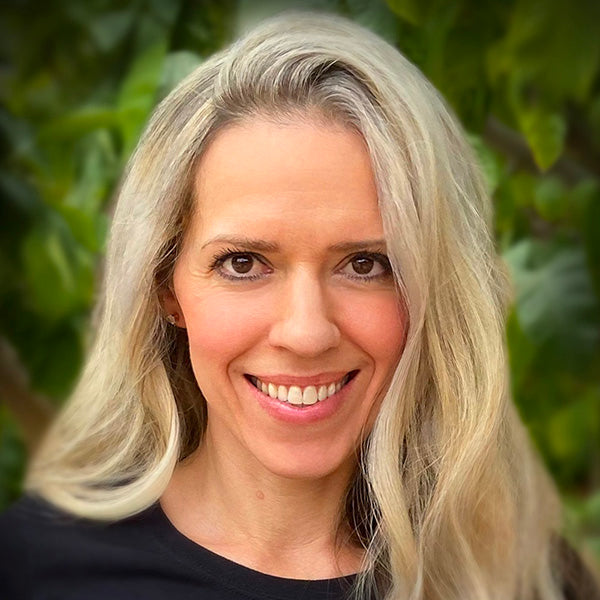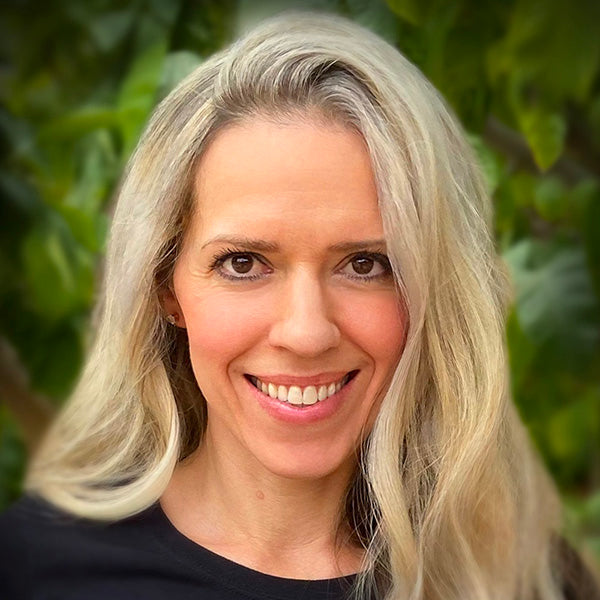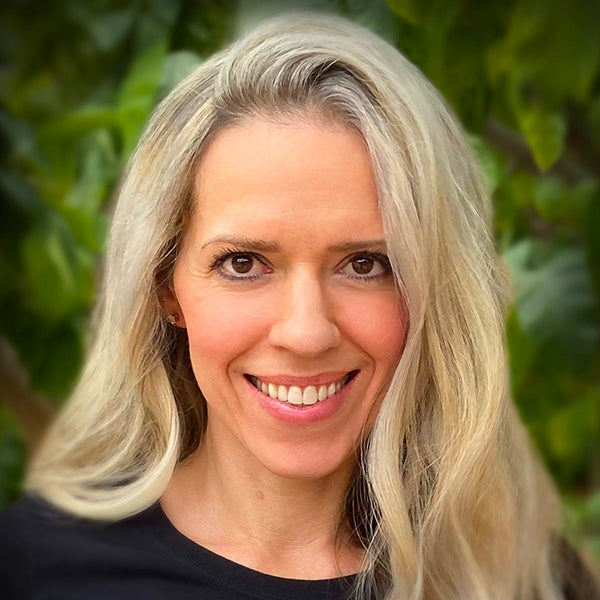
Body Resilience: “Never lose your connection to yourself!” Interview with Isabel Scholz
Body Resilience: “Never lose your connection to yourself!” Interview with Isabel Scholz
"The classic resilience approach is a purely mental one. However, it ignores the fact that all of our life's experiences have left their mark on our autonomous nervous system, which is located in the body. If we learn to perceive our body from the inside out, it serves as an inner compass and gives us a healthy sense of self that helps us to stay with ourselves even in difficult situations and not lose ourselves in the outside world." Personal trainer and company coach Isabel Scholz , author of the guide " Body Resilience ", uses the healing connection between body and psyche in her innovative resilience approach by practicing holistic perception - that is, on a physical, emotional and mental level - and linking them vertically.
For some time now, everyone has been talking about resilience – from life coaching to medicine to management consulting. Where does the concept come from and what does it actually mean?
Isabel Scholz: Resilience is the so-called "immune system of our soul". The more resilient a person is, the better they can psychologically deal with stress, problems or crises. And the current times in particular show us how important this coping ability is. It was researched in the 1950s by the American psychologist Prof. Emmy E. Werner. She found that around a third of adults who were exposed to stressful crisis situations as children were still able to lead a balanced and happy life. These people obviously had a psychological strength that allowed them to go through life more contentedly and stably than others. In its original meaning, the term "resilience" comes from materials science, where it describes the ability of a material to return to its original shape after being deformed. A sponge is therefore more resilient than a lump of clay. And a person who always finds his way back into shape has, according to the study mentioned above, internalized seven psychological protective factors that are now referred to as the “Seven Keys to Resilience”: acceptance, optimism, belief in one’s own self-efficacy, taking responsibility for one’s own life, solution orientation, future orientation and positive social contacts.
In your book, you deal intensively with the "classic" resilience concept and contrast it with the holistic "body resilience". What is missing from the previous methods and what makes your new approach stand out?
Isabel Scholz: The classic resilience approach is a purely mental approach. It states that you can navigate through problems and crises with the right thoughts (keyword "mindset"), which are based on the key factors mentioned above. To put it succinctly: "Think positively and your life will turn out for the better!" Unfortunately, there are many situations in which the head and thoughts alone cannot help us. One reason for this is that our childhood and all the experiences we have had in life have left imprints on our autonomic nervous system that we cannot mentally access. You can imagine a person who is afraid of flying or dogs. When panic, fear or stress arises, all positive thoughts are of no use. He may no longer even be able to think positively at all. The reason for this is that, from a developmental psychology perspective, the blockage is not in the head, but in the body, where the autonomic nervous system is located. The classic resilience approach ignores this. “Body Resilience” is my mix of methods that integrates parts of body psychotherapy and body-oriented process work according to Arnold Mindell. As the name suggests, the body and its perception play a crucial role here. In addition, elements of the polyvagal theory are included, which positively stimulate the vagus nerve, also known as the self-healing nerve, through certain physical exercises and thus send calming, stabilizing signals to the nervous system. In this context, it is important to know that 20 percent of the nerve pathways flow from the head into the body via the “information highway” of the vagus nerve, but 80 percent flow in the opposite direction from the body upwards towards the brain. The power from the body is therefore purely biologically four times greater than the power from the thoughts! A relaxed autonomic nervous system therefore also sends relaxation “upwards” and thereby calms the mind.
“ BodyResilience ” offers a realistic and authentic mix of personal experience, proven methods and practical exercises. What motivated you to write your book and what kind of readers do you hope to reach?
Isabel Scholz: I have had to go through a number of external and internal crises in my life. Whether it was a relationship crisis, a job crisis or a life and meaning crisis, everything made me constantly search for what really makes me happy and content. For years I was looking for the answer to the questions: "How do I get to know myself and how do I really live my life? A life from which I don't have to recover on vacation?" Along the way I got to know a lot of methods and from the time I decided to work as a trainer and coach myself I also passed them on to other people. In the process it became increasingly clear what really helps people (including me of course) and, above all, what helps them in the long term. From this observation I developed the desire to firstly combine what I consider to be the most effective parts of the methods and secondly to then inspire other people with this new mixture through my book and my story. Both in relation to internal and external crises. I would like to address everyone who, to put it simply, longs for a life of happiness and contentment. But also people who are well prepared to get through difficult times and even want to grow from them.
Your holistic method integrates the interior of our body as a sensory organ and shows how it works, how it can be sensed and used. How should we imagine this in practical terms and what can be achieved with it?
Isabel Scholz: How do you know that you are thirsty or hungry? How does your body communicate this need? You probably feel that your throat is dry or your stomach is growling. Our body produces signals and impulses that we can perceive and then know "what to do". Namely, to drink or eat. If we manage to perceive our body from the inside in other contexts and to feel what our needs, impulses and the associated emotions are, then this gives us orientation for a healthy reorientation. An inner compass, so to speak, that helps us to make the right decisions or to act in a way that suits us and is good for us. This is how a healthy sense of self develops, which helps us to stay with ourselves even in difficult situations and not to lose ourselves in the outside world. In my book, I use a step-by-step model to describe how you can gradually practice and develop this sense of self.
Resilience in the sense of resistance can often be understood as simply enduring difficult situations and maintaining existing conditions instead of changing oneself and one's life. How does "body resilience" differ from mere system compatibility?
Isabel Scholz: I'm very happy about this question! Because in the past I myself was a master of adaptation in the sense of "How do I have to be so that others like me or so that I don't fall outside the social or corporate framework?" or "I'm flexible, I adapt!" In doing so, I regularly pushed my needs aside and then somehow reintegrated myself into the system that had previously made me ill. And that is unfortunately what I have to observe again and again with people in corporate contexts in which I work. After a personal crisis, a burnout or an overload, people take a break, but then often try to somehow "push" the person back into the system. With the right mental attitude, the right mindset, everything is supposedly easier to bear. I explicitly distance myself from that! Body resilience ensures that people grow by finding (back) to themselves and their authentic being, so that they can then go out into the world again and never lose their connection to themselves. Body resilience is not directed towards the outside, but rather the outside is directed towards it ! This creates balance and life feels real again.
As a coach and trainer, you have been supporting people and companies in difficult situations for many years. What is the difference between working with burnout patients and working with companies in a crisis? What do they have in common? And what kind of resilience is required in each case?
Isabel Scholz: A crisis doesn't disappear if you ignore it. I keep finding that both companies and people only put the energy into a change process when they've already had their backs against the wall. People often turn a blind eye to all the signs that indicate that the system is sick or collectively exhausted. In the company, productivity within the processes drops, employees are at the limit of their strength due to a lack of resources or time pressure, resign or carry around an inner resignation. My first task as a consultant is to bring this to the attention of everyone involved, i.e. to make it visible. Even if this is unpleasant, it is necessary in order to be able to eliminate the causes instead of tinkering with the symptoms. This is where the learning task and enormous growth potential lie. Both for a company and for a person. The person who is suffering from burnout has reached one of their lowest points. This must be used for personal development. When the imprints anchored in the nervous system are dissolved, people can access their inner strength again. To do this, the healing connection between body and psyche is established by practicing holistic perception, i.e. physical, emotional and mental, and linking them vertically. The mental level in body resilience always serves to understand what is shown on the physical and emotional level. And this vertical perception is also necessary in companies that are burning out: the physical level here corresponds to the employees, the emotional level to the social system, and thus the relationships, and the mental level corresponds to the management level that controls from above. Vertical perception, communication and the healthy linking of these three levels are also the first step out of corporate burnout. In summary, I therefore see my work as consciousness work.
You make it clear that it is not about esoteric self-optimization - but "body resilience" also has something to do with spirituality. What is the connection here?
Isabel Scholz: When I scroll through social media in particular, I get the impression that personal development has become a kind of hype that is more like a mania for self-optimization than an authentic search for one's own meaning. We are pushed by a consumer-oriented Chaka!-Chaka! mentality and misunderstood spirituality to artificially shine on a show stage that is often characterized by narcissism. This has no place in body resilience. Body resilience is linked to the so-called core of being and acts from there. It is an "inside out" approach, not the other way around. It is about finding out what is important for your own being. And this is where the connection to something bigger of which we are a part is created. What are we meant to be? Why are we on earth? What is the task of each and every one of us? The term "sin" in its religious origin means "turning away from God's will". The will that expresses itself through our being. Anyone who does not take care of their core being sins against themselves and begins to decay inside. Through body resilience, the body can be used as a "spiritual receiving device", as a resonance body for spiritual things and the will that wants to happen through us.
Book tip:
Isabel Scholz: Body Resilience . Bringing head and body into harmony: How to achieve calm, stability and resilience. Mankau Verlag, 1st edition November 2022, paperback, 13.5 x 21.5 cm, 239 pages, 18.00 euros (D) / 18.50 euros (A), ISBN 978-3-86374-667-4
Link recommendations:
More information about the book “BodyResilience”
To the reading sample in PDF format
More about author Isabel Scholz
Our social networks − for questions, criticism, suggestions











